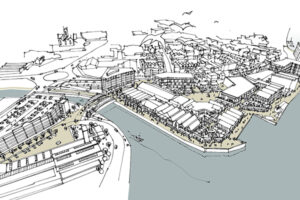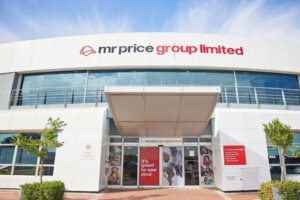By Ana Mendonca
Global retail sales are expected to grow to around USD 28 trillion by 2020, up from around USD 22 trillion in 2016. Along with this projected growth, it is important to realize that retail is currently the second-highest consumer of energy in the UK and is responsible for around a fifth of all UK carbon emissions. This pattern is likely very similar across Europe, too. With online sales growing at over 10% per year, the financial and environmental sustainability of retail across Europe has become challenging as investors have begun to transform their malls into retail destinations that boast longer dwell times for customers, which could have further sustainability implications.
The emerging Build to Rent (BTR) market focuses on building groups of dwellings owned by investors that often have on-site leasing, management, security, and maintenance teams. Many BTR schemes now include mixed-use elements grouped around retail, which is positive for retailers and helps to instill an organic community feeling. The answer to rejuvenating our high streets and town centers might lie in the addition of high-density BTR as it ticks a lot of boxes for investors and retailers and addresses the strong demand for new homes. In a sense, this is a way in which lessons can be learned from the past (and, more recently, New Urbanism), when high-density living was organically built around retail hubs (the high street).
KPMG’s “Global Retail Trends 2019 Report” states that sustainability is no longer optional in retail, with a third of consumers choosing to buy brands based on their social and environmental impact and expecting the sector to act upon their social and sustainability commitments and goals. The retail sector will now have to look at how it can respond to the challenge and deliver more sustainable spaces that provide value for investors, retailers, and customers. BREEAM certification can offer value most directly through its effect on build quality as well as on-going performance of operational retail assets. The process of undergoing BREEAM assessment and achieving end certification also provides other forms of significant value, such as the discharging of planning and other obligations, an increase in assurance for investors and other stakeholders, a readily-understood, flexible “common currency” for communication with stakeholders, and an increased confidence in the delivery of client requirements.
BREEAM can help attract customers to retail spaces: It can help develop and maintain positive relationships with local communities, help enhance shoppers’ experiences when visiting retail locations, help create positive views of the venues as destinations, thereby creating points of difference that can set the retailers or developments apart from organically their peers. Worldwide, BREEAM has certified nearly 2,000 retail spaces under its New Construction schemes and over 1,600 under the BREEAM In-Use schemes.
BREEAM is currently updating the BREEAM In-Use scheme with many improvements and the expansion of its capabilities to assess all types of residential properties. This includes both multi-family developments, such as apartment blocks, and individual homes. The updates will enable clients to assess the performance of their entire residential portfolios, demonstrating their sustainability directly and through other benchmarks, such as GRESB. Coupled with retail assessments, BREEAM has the power to support the building of a more resilient retail sector, which, ultimately, should be the destination.





